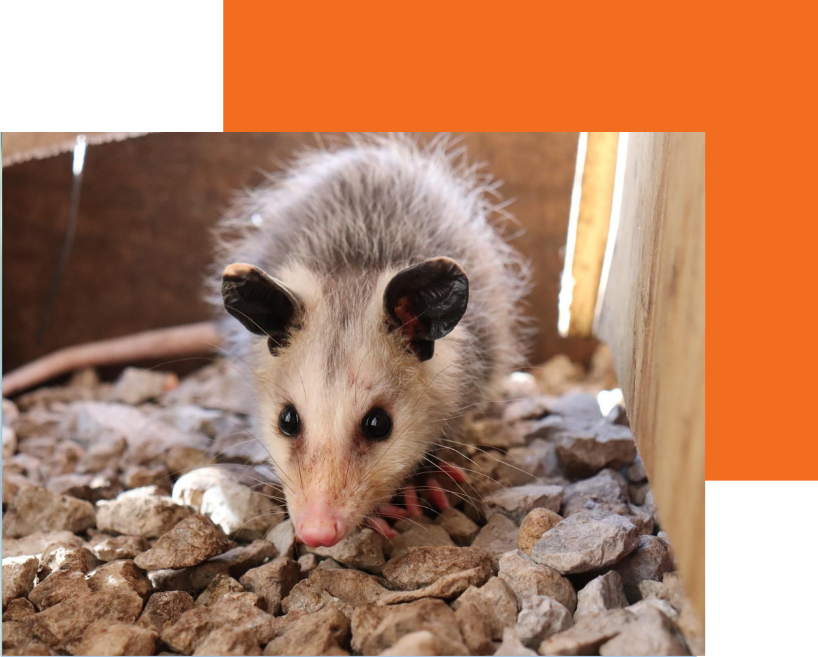Opossums
Did you know that opossums are the only marsupial in North America and common in Illinois? Their populations can exceed 200 hundred per square mile peaking in summer, with the lowest numbers in late winter. Generally, they are around the size of a house cat, with the males often slightly bigger. They have distinct, scaly yellow tails, which are about 1/3 of their total body length, and thick white fur with gray tips and pinkish ears. They have long snouts with black, beady eyes. They also have five pink toes on their paws, which helps them climb well. Their breeding season is usually between October and February. A female can have one to three liters a year, carrying the babies in a pouch. They aren't hibernating animals, although they stay cooped up during cold weather.
They tend to be non-aggressive and fake death if they are scared by slowing their heart rate to deceive predators. This catatonic state is an involuntary response because of a threat. When they are afraid, they may hiss while excreting feces or a thick green smelly substance. Leading mostly solitary lives, they choose to live in wooded areas ranging about 50 acres in size with a permanent water source such as a river or a pond. They are known to take shelters other animals have created or to den in trash heaps or hollow trees. They might even line them with leaves or debris.
Opossums are not picky eaters but have big appetites. Researchers have found that they remember where food is better than other animals do. They leave their dens at night in search of food and are omnivorous scavengers with their diet ranging in bird eggs, roadkill, ticks, and small vertebrates. Corn is a major staple to their diet, especially during the winter months. Bird food, trash, pet food, and gardens draw them into residential areas as an easy food source. Another food source for them is snakes, as they are immune to most venoms.
Multiple human and animal diseases can be spread by opossums such as Leptospirosis, Buruli bacteria, or Endemic Typhus. Some of them can be passed to dogs, cows, and pigs as well through feces or urine. Rabies is not one of them, though, as their body temperature is lower than most mammals, making it hard for the virus to survive. Having them infest your home can be an issue to the health of you or your pets. Not to mention, they can cause unsanitary and foul-smelling conditions. Based on their size, you might hear different sounds such as scratching to hissing in the walls, attic, or crawl space. You may first find damage outside the house or deck area when they are searching for a den. They are known to use insulation for nesting and damage ductwork and wiring, which can cost thousands to replace.
The young and mothers of these marsupials are protected; trapping and hunting are regulated by the Department of Natural Resources to ensure their population will not decline. Some removal options require a special license or permit, which comes with rules and regulations. Call Cardinal Insect and Pest for the most-trusted company for removing an opossums or other nuisance animals from your property.
All Rights Reserved | Cardinal Insect & Pest Solutions


